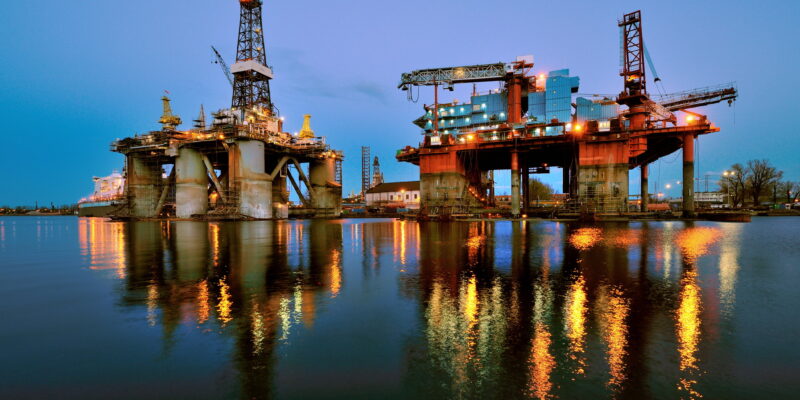
In the dynamic landscape of the Oil and Gas industry, where resilience, reliability, and corrosion resistance are paramount, the choice of materials for equipment becomes a pivotal decision. With their exceptional properties, stainless steel 304L pipe fittings have become synonymous with efficiency and durability in the sector. This blog delves deeper into the unique attributes of stainless steel 304L, its myriad applications in the Oil and Gas industry, and its transformative impact on infrastructure.
Also see: Unlocking Savings: Your Essential Guide to OSB Board Deals
Unveiling the Strengths of Stainless Steel 304L
- Corrosion Resistance: Stainless steel 304L owes its corrosion-resistant properties to the presence of chromium, which forms a protective oxide layer on the material’s surface. This layer is a barrier, preventing corrosive agents from penetrating the steel. In the harsh and corrosive environments of the Oil and Gas industry, where exposure to corrosive fluids is inevitable, the corrosion resistance of 304L becomes a game-changer. Equipment longevity is enhanced from pipelines to refining units, reducing the frequency of replacements and associated costs.
- Low Carbon Advantage: The ‘L’ in 304L signifies its low carbon content, which makes this grade particularly suitable for welding applications. The reduction in carbon content minimizes the risk of sensitization, a process in which carbides can form in the grain boundaries during welding, leading to corrosion issues. This characteristic makes stainless steel 304L an excellent choice for welded structures, ensuring the integrity of pipe fittings in the Oil and Gas industry.
- High-Temperature Performance: Oil and Gas sector operating conditions often involve high temperatures. Stainless steel 304L maintains its strength and corrosion resistance even at elevated temperatures, making it a reliable material for heat exchangers and processing units. The material’s ability to withstand thermal stress contributes to operations’ overall efficiency and safety.
Also see: Unveiling the Superiority of 904L Stainless Steel Pipes
Applications Across the Oil and Gas Spectrum
- Offshore Drilling and Production: The offshore environment poses unique challenges, including exposure to saltwater, extreme weather conditions, and the constant threat of corrosion. Stainless steel 304L’s resistance to corrosion in chloride-rich environments makes it an ideal choice for offshore drilling and production facilities. Its durability ensures the reliability of critical components, minimizing the risk of equipment failure in remote and challenging offshore locations.
- Pipelines and Transport Systems: The transportation of oil and gas requires a robust infrastructure, and stainless steel 304L pipe fittings play a crucial role in ensuring the integrity of pipelines. Whether it’s conveying crude oil, natural gas, or refined products, these fittings provide a corrosion-resistant solution that maintains the quality of transported materials and reduces the need for frequent maintenance.
- Refineries and Petrochemical Plants: Refineries and petrochemical plants are hubs of complex chemical processes and high-temperature operations. Stainless steel 304L’s versatility makes it an integral material in these facilities, where it is used for pipe fittings, heat exchangers, and various other components. Its ability to withstand aggressive chemicals and extreme temperatures ensures the reliability and safety of these critical processes.
Benefits Beyond Performance
- Cost-Effectiveness: While the initial cost of stainless steel might be higher than some alternative materials, the long-term cost-effectiveness is evident. The extended service life of stainless steel 304L pipe fittings reduces maintenance expenses, minimizes downtime, and provides a solid return on investment for the Oil and Gas industry.
- Ease of Fabrication and Customization: Stainless steel 304L’s excellent formability and weldability allow for easy fabrication and customization of pipe fittings. This flexibility is a significant advantage, enabling the adaptation of fittings to specific project requirements. Quick and efficient installation contributes to project timelines and overall operational efficiency.
- Environmental Sustainability: The Oil and Gas industry increasingly emphasises sustainable practices, and stainless steel’s recyclability aligns with these goals. Choosing 304L pipe fittings contributes to environmental sustainability by reducing the demand for new raw materials and minimizing waste, making it a responsible choice for environmentally conscious projects.
Innovation and Future Trends:
The Oil and Gas industry is dynamic, and innovations in materials and technologies continue to shape its landscape. As the sector evolves, stainless steel 304L remains at the forefront, adapting to new challenges and contributing to developing more efficient and sustainable infrastructures. Ongoing research and development efforts are focused on further enhancing the material’s properties, ensuring its continued relevance in the face of evolving industry requirements.
Conclusion:
Stainless steel 304L pipe fittings stand as a testament to the relentless pursuit of excellence in the Oil and Gas industry. Their corrosion resistance, low carbon advantage, high-temperature performance, and versatility make them indispensable in critical applications across the sector. Beyond their exceptional performance, the cost-effectiveness, ease of fabrication, and environmental sustainability of stainless steel 304L further solidify its position as a preferred material for pipe fittings. As the industry navigates the challenges of today and tomorrow, stainless steel 304L remains a beacon of reliability, ensuring the seamless integration of pipelines, refineries, and petrochemical plants to pursue a resilient and sustainable energy future.










